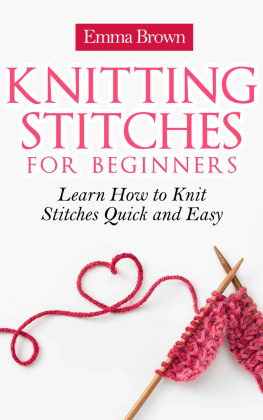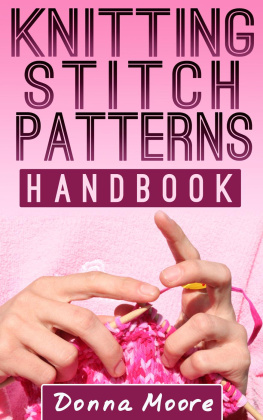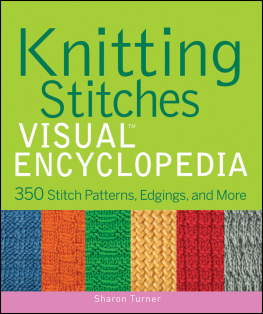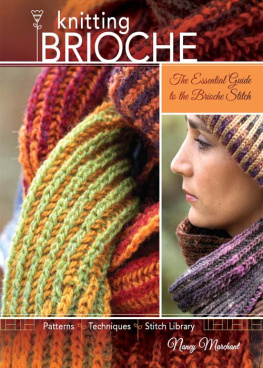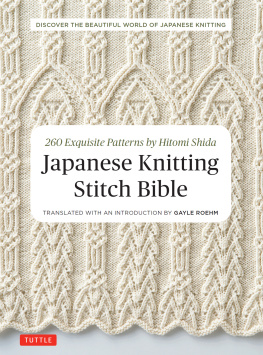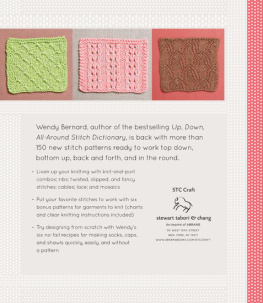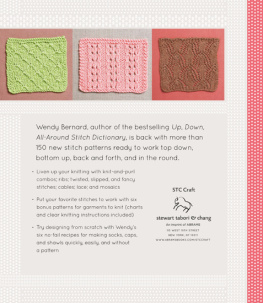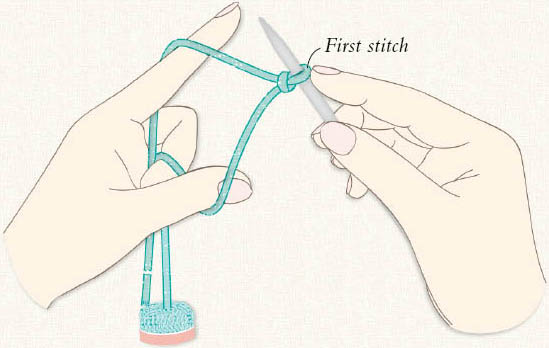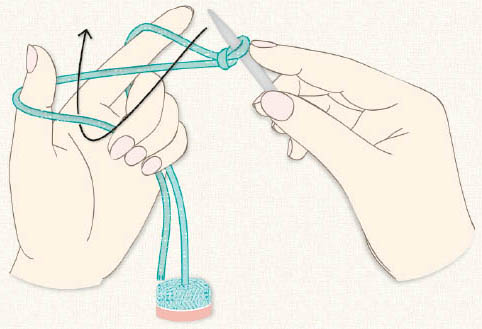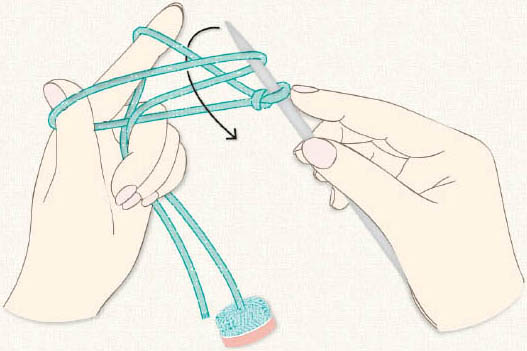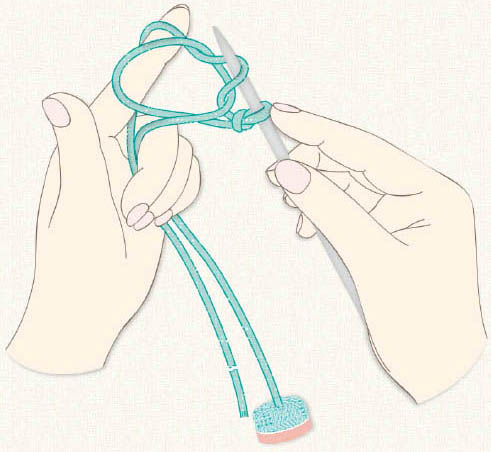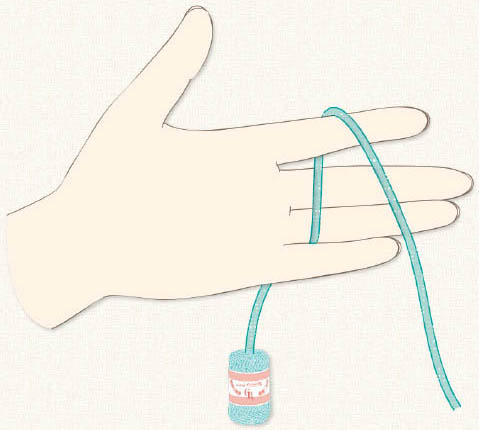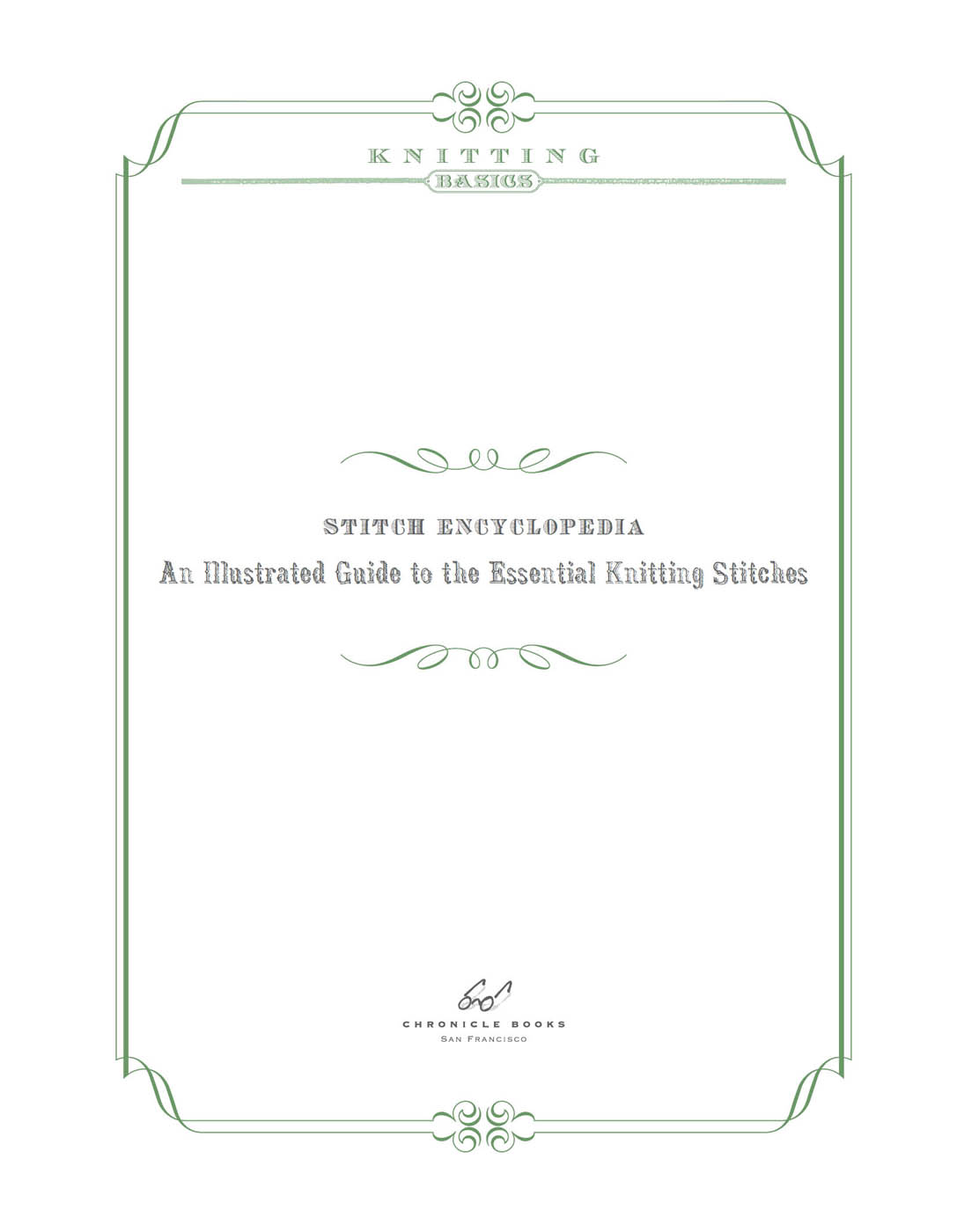

Welcome.
For those who are thinking of trying knitting for the first time and those who are already knitting but dont yet understand all the basic techniques, you can master knitting by following each step with these easy-to-understand illustrations.
The basic stitches in knitting are simpleknit and purl. With that combination, you can make a wide variety of knitted fabrics. And by increasing or decreasing stitches, you can easily adjust the shape of your piece.
At first, your project may not be exactly the shape you intended. Perhaps, without realizing it, you dropped a stitch or two or added stitches where you didnt want them. Relax. Just practice until you get the knitting rhythm, step by step.
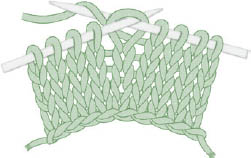
First published in the United States of America in 2014 by Chronicle Books LLC.
First published in Japan in 2012 as Kihon No Amikata Ga Wakaru Hon Hajimemashite No Bobari
Kyoshitsu by EDUCATIONAL FOUNDATION BUNKA GAKUEN BUNKA PUBLISHING BUREAU.
Text copyright 2012 by EDUCATIONAL FOUNDATION BUNKA GAKUEN BUNKA PUBLISHING BUREAU.
Illustration copyright 2012 by Nakaniwa Rockett.
All rights reserved. No part of this book may be reproduced in any form without written permission from the publisher. English language rights arranged with EDUCATIONAL FOUNDATION BUNKA GAKUEN BUNKA PUBLISHING BUREAU through Toppan Printing Co., Ltd.
Library of Congress Cataloging-in-Publication Data is available.
ISBN: 978-1-4521-2705-7 (pb)
ISBN: 978-1-4521-3971-5 (epub, mobi)
BUNKA PUBLISHING BUREAU Credits:
Publisher: Sunao Onuma
Designer: Gen Watanabe
Illustrator: Nakaniwa Rockett
Copyeditor: Haruyo Yamada
Copyediting Collaborator: Akiko Seino
Proofreader: Masako Mukai
Editor: Yoko Osawa (BUNKA PUBLISHING BUREAU)
Chronicle Books LLC
680 Second Street
San Francisco, California 94107
www.chroniclebooks.com
contents


Basic Techniques
KNITTING BASICS

There are just two basic knitting stitches, knit and purl. To begin knitting, you need to learn to cast on stitches, which become the foundation for the remainder of your piece. Casting on may seem complicated at first, but have a bit of patience and soon your needle will be covered with new stitches. And after you work the first row, its just repetition. Once you learn the stitch symbols, youll also be able to knit a design from any knitting book.

TURNING KNITTED FABRIC
When knitting back and forth in rows (also called flat knitting), one important skill is turning your work when youve worked to the end of the row. After you work the last stitch, with the yarn still over the index finger of your left hand, turn the knitted fabric to the other side, and transfer it to your left hand, placing the empty needle in your right hand. Youll see this illustration throughout the book reminding you to turn your fabric.
CASTING ON
A cast-on stitch is a foundation stitch made on the needle prior to beginning to knit. There are many different ways to cast on; 5 popular methods follow.
LONG-TAIL CAST-ON
This is a well-known cast-on method and is usually the first a beginner learns. Its worked by twisting the yarn around the fingers of your left hand. This is a flexible cast-on, suitable for many stitch patterns. To keep your cast-on flexible, use a needle 2 sizes larger than the needles you will be using for the project.

Wrap the yarn around the fingers of your left hand as shown, leaving a long tail, approximately 3 times the length of the knitted fabric being cast on (a 12-in-/30-cm-wide scarf would require approximately 1 yd/1 m for the tail).
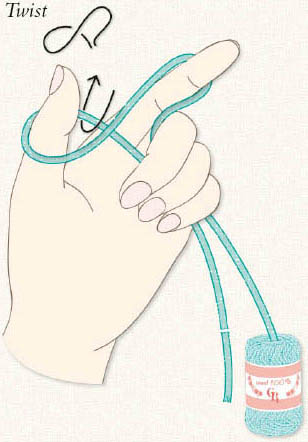
Change the position of the yarn on your thumb, and then insert the needle in the direction shown by the arrow.
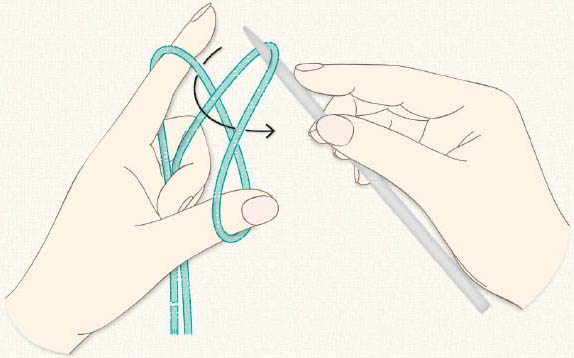
Pull the yarn from the index finger of your left hand out through the middle of the loop on your thumb.
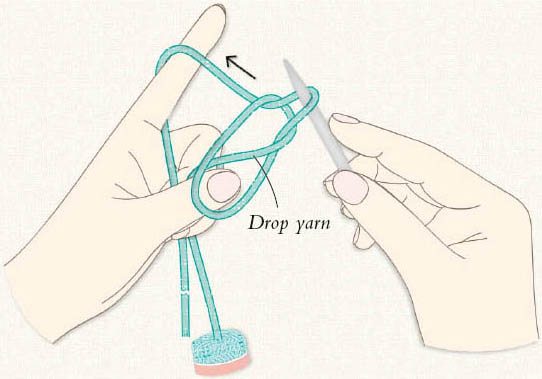
Drop the loop off your thumb, then pick up the yarn again and tighten the loop on the needle.
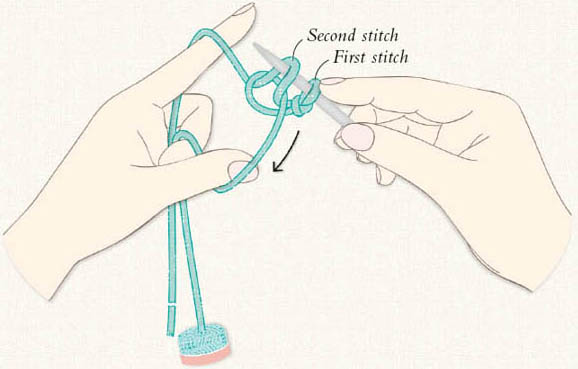
Pick up the yarn with your thumb as shown and tighten the loop; youve made the second stitch. Repeat steps for each stitch to be cast on.

Make the required number of stitches. The cast-on stitches count as the first row.
Holding the yarn and needles
This method of knitting is called the Continental (or French) style and is recommended here because it allows for speedy knitting. It doesnt matter if you hold the yarn another way; the important thing is that youre comfortable and knit with a regular rhythm and even tension.


